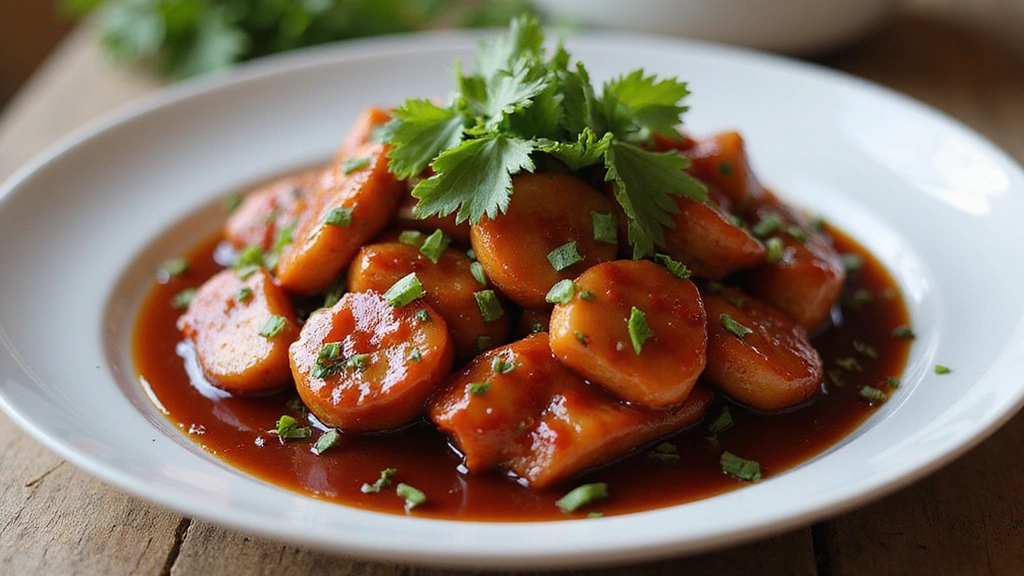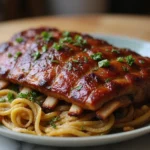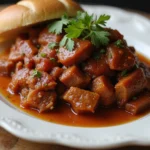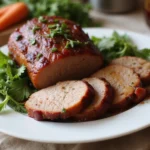Korean BBQ sauce is a vibrant blend of sweet, savory, and spicy flavors that captures the essence of Korean cuisine.
This sauce adds a bold twist to grilled meats, vegetables, and even tofu, making it a versatile staple in any kitchen.
I first experienced this explosion of flavor at a bustling Korean BBQ restaurant, where the sizzling meats and fragrant sauces created an unforgettable atmosphere.
Whether you’re throwing a backyard barbecue or simply looking to elevate your weeknight dinner, these recipes will inspire you to embrace the rich culinary heritage of Korea.
The History and Cultural Significance
• Recipes With Korean BBQ Sauce Full Of Bold Taste traces its origins to Korea, where it was originally created by ancient culinary traditions focused on grilling meats.
• The dish evolved over decades as ingredients like gochujang (Korean chili paste) and soy sauce were introduced, eventually becoming the beloved version we know today.
• In Korea, this dish traditionally appears at family gatherings and celebrations, symbolizing togetherness and the importance of sharing a meal.
• While many variations exist across different regions, the authentic version maintains a balance of sweet and spicy that sets it apart from imitations.
Recipe Overview
Nutritional Information (per serving)
Ingredients
Essential Equipment Guide
Grill or Grill Pan: A good quality grill or grill pan is essential for achieving that perfect char and smoky flavor in your meats. Look for one with good heat retention and even heat distribution to avoid hot spots.
Mixing Bowl: A large mixing bowl is important for marinating your meats in the Korean BBQ sauce. Opt for a glass or stainless steel bowl, as these materials won’t react with the acidic ingredients in the marinade.
Basting Brush: A basting brush helps you apply sauce evenly while grilling. Choose one with silicone bristles for easy cleaning and durability.
Preparation Methods
Marinating: Marinating is crucial for infusing the flavor of the Korean BBQ sauce into your meat. Allow at least 30 minutes for marinating, but overnight is best for deeper flavor penetration.
Grilling: Grilling provides a smoky flavor that complements the sauce beautifully. Preheat your grill to medium-high heat and ensure the grates are clean to avoid sticking.
Basting: Basting adds layers of flavor and moisture to your meat while it cooks. Use a basting brush to apply the sauce during the last few minutes of grilling for the best glaze.
Step 1: Prepare the Marinade
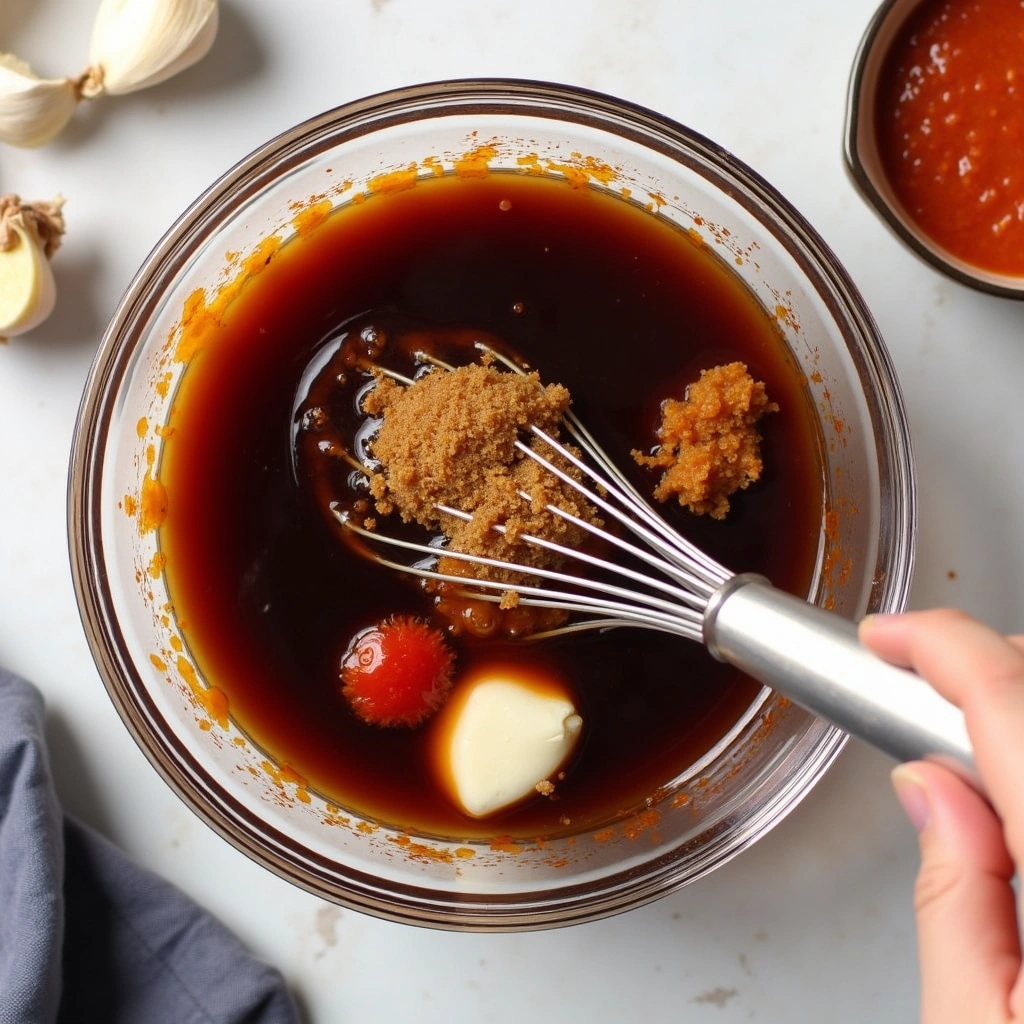
In a large mixing bowl, combine soy sauce, brown sugar, gochujang, minced garlic, and sesame oil.
Whisk together until the sugar is fully dissolved and all ingredients are well incorporated.
Taste the marinade and adjust sweetness or spiciness if desired.
This marinade will be the base for infusing flavor into your meats.
Step 2: Marinate the Meat
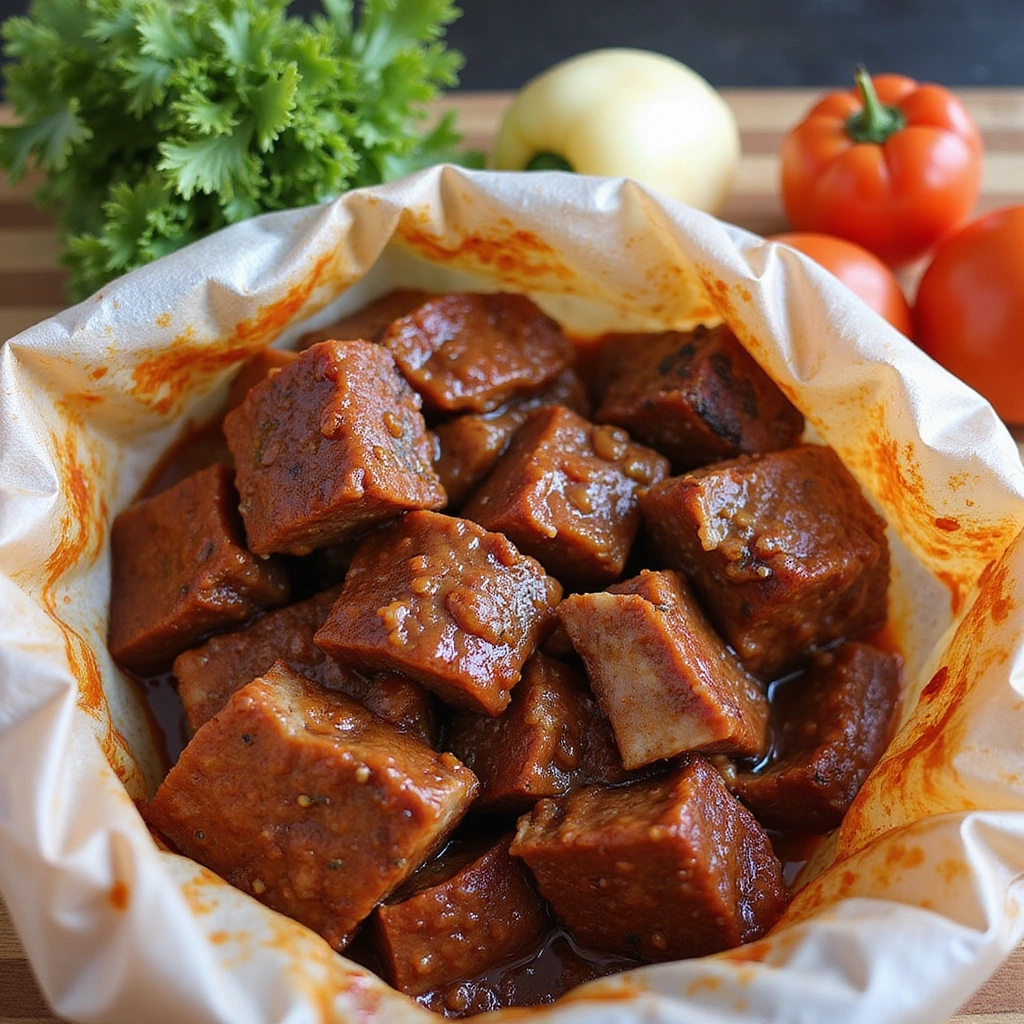
Place beef short ribs and pork belly in a large resealable plastic bag or shallow dish.
Pour the prepared marinade over the meat, ensuring it’s evenly coated.
Seal the bag or cover the dish and refrigerate for at least 30 minutes, or overnight for best results.
This will allow the flavors to penetrate the meat deeply.
Step 3: Preheat the Grill

While the meat is marinating, preheat your grill to medium-high heat.
Clean the grill grates with a brush to ensure they are free from debris and ready for grilling.
A properly preheated grill ensures even cooking and prevents sticking.
You can test the heat by holding your hand about 6 inches above the grill; it should feel hot.
Step 4: Prepare the Vegetables
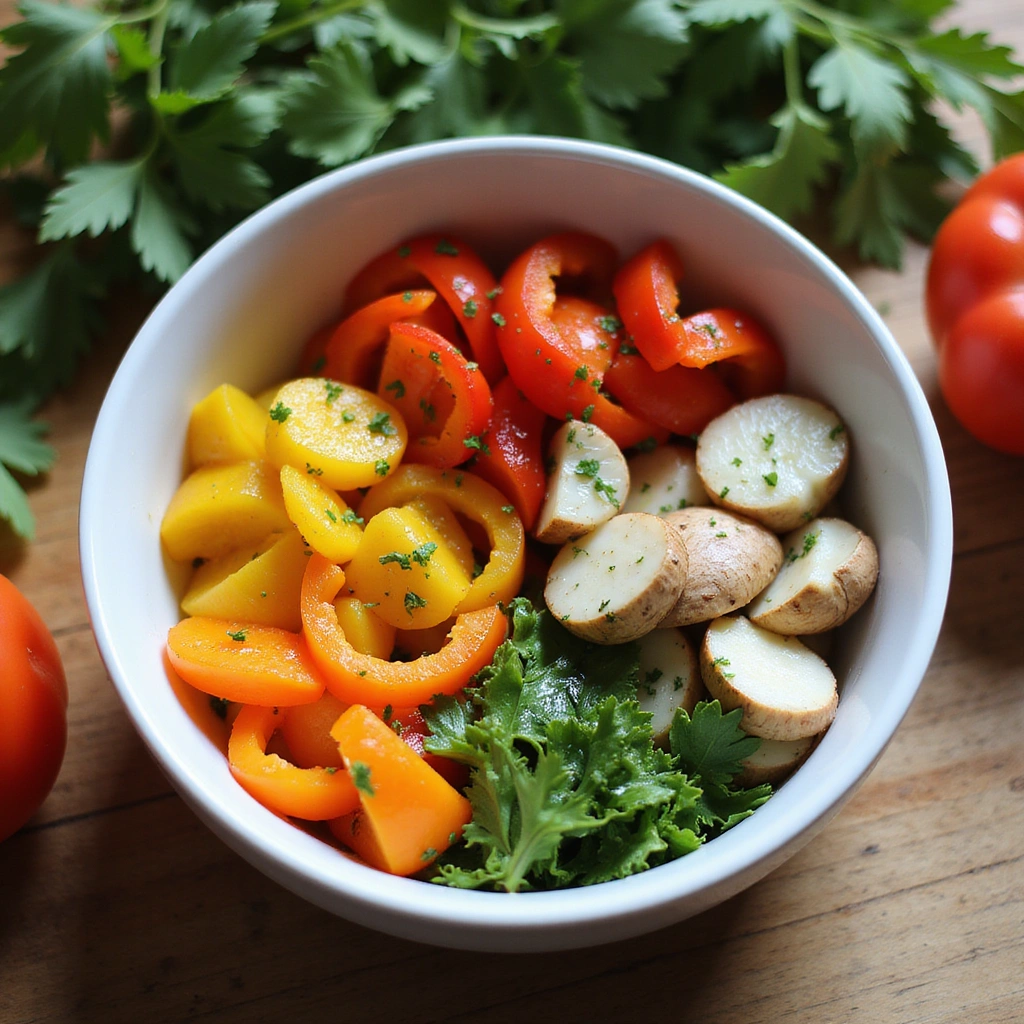
Wash and slice bell peppers and onion into wedges, and slice mushrooms.
Toss the vegetables in a little bit of oil and salt to enhance their natural flavors.
This preparation ensures that the vegetables will caramelize nicely on the grill.
Consider marinating them in the leftover sauce for added flavor.
Step 5: Grill the Meat
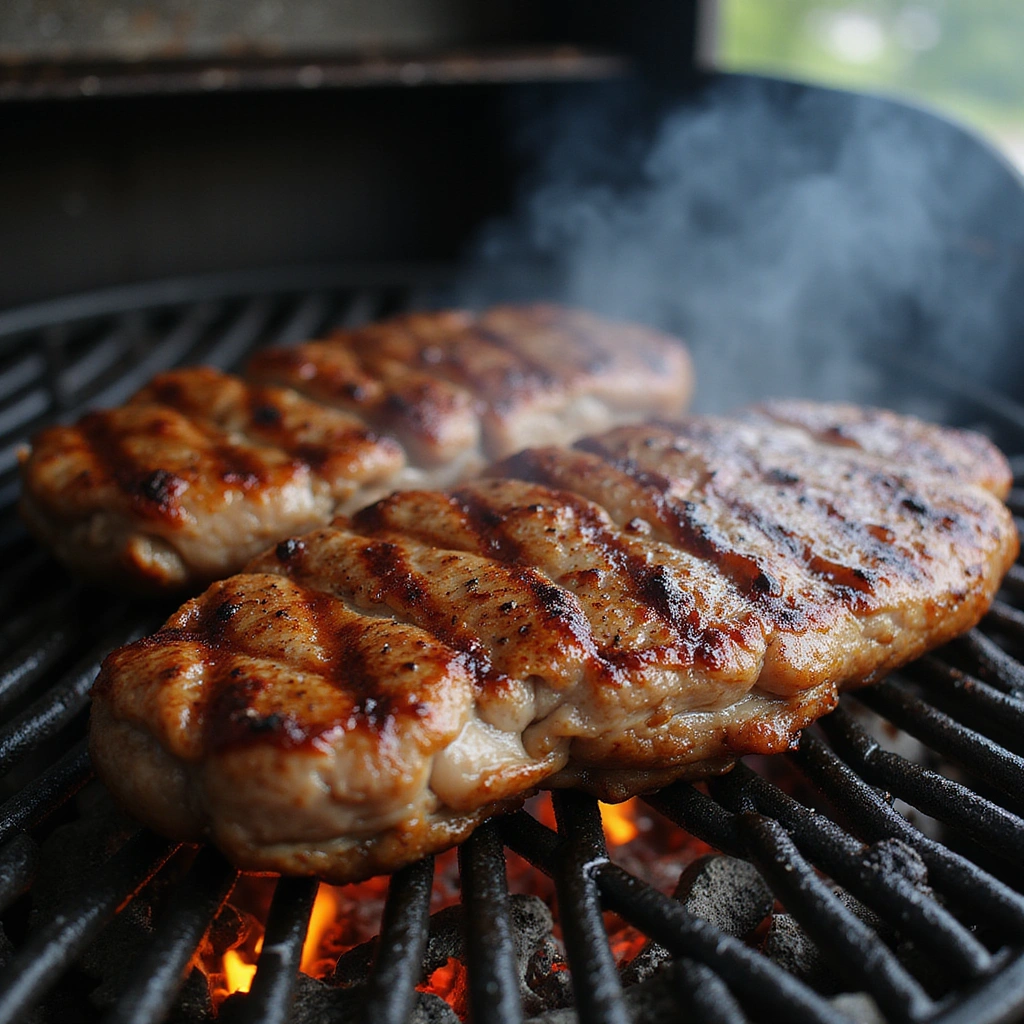
Remove the marinated meats from the refrigerator and let them sit at room temperature for about 10 minutes.
Place the meats on the preheated grill and cook for about 5-7 minutes per side, or until desired doneness is achieved.
Baste with extra marinade during the last few minutes of cooking for added flavor and glaze.
Look for grill marks and a slightly charred exterior, which indicates a perfect grill.
Step 6: Grill the Vegetables
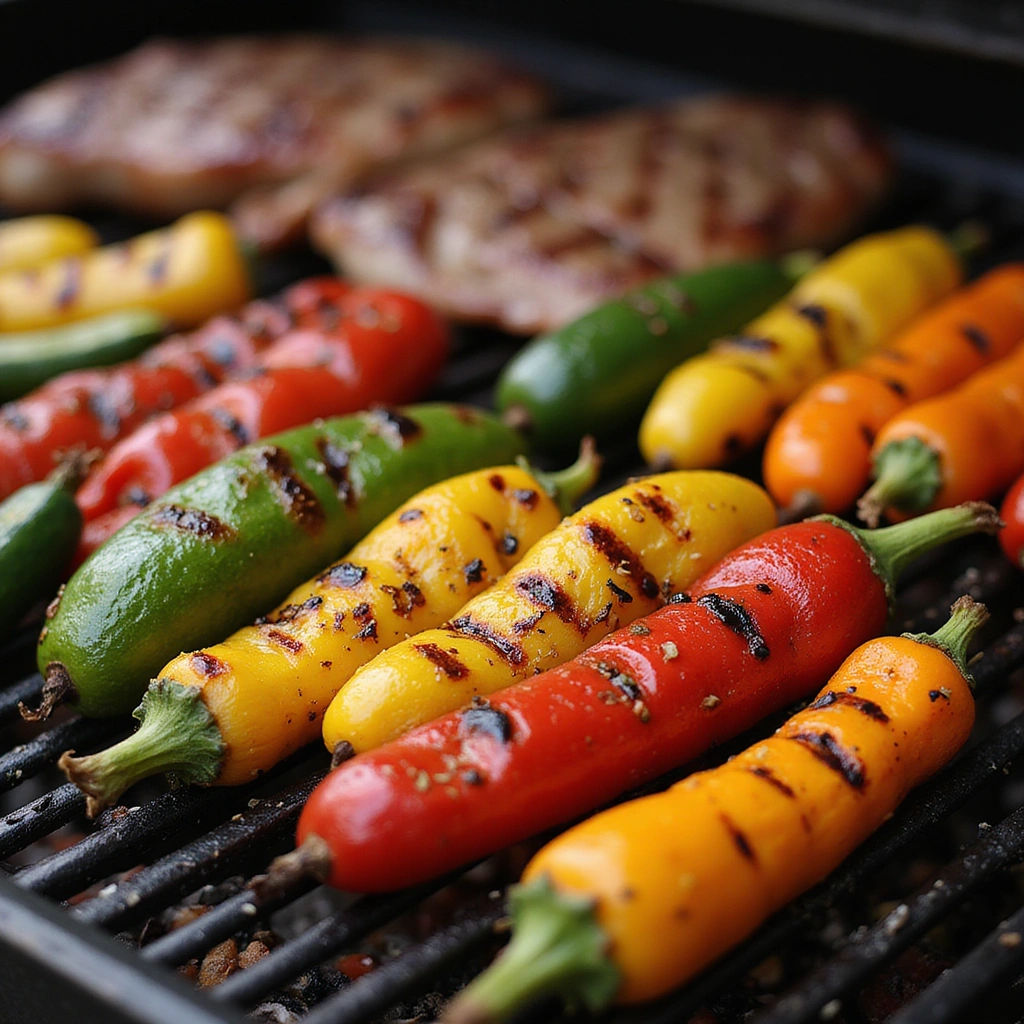
Add the prepared vegetables to the grill after the meat has been cooking for a few minutes.
Grill the vegetables for about 4-5 minutes, turning occasionally until they are tender and have nice grill marks.
This step adds a smoky flavor that complements the meat beautifully.
Ensure the vegetables are cooked but still crisp to maintain their texture.
Step 7: Check for Doneness

Use a meat thermometer to check the internal temperature of the thickest part of the meat.
Beef should reach at least 135°F for medium-rare, while pork should be cooked to 145°F.
If the meat is not yet at the desired temperature, continue grilling until it reaches the proper doneness.
This ensures safety and enhances the flavors.
Step 8: Rest the Meat
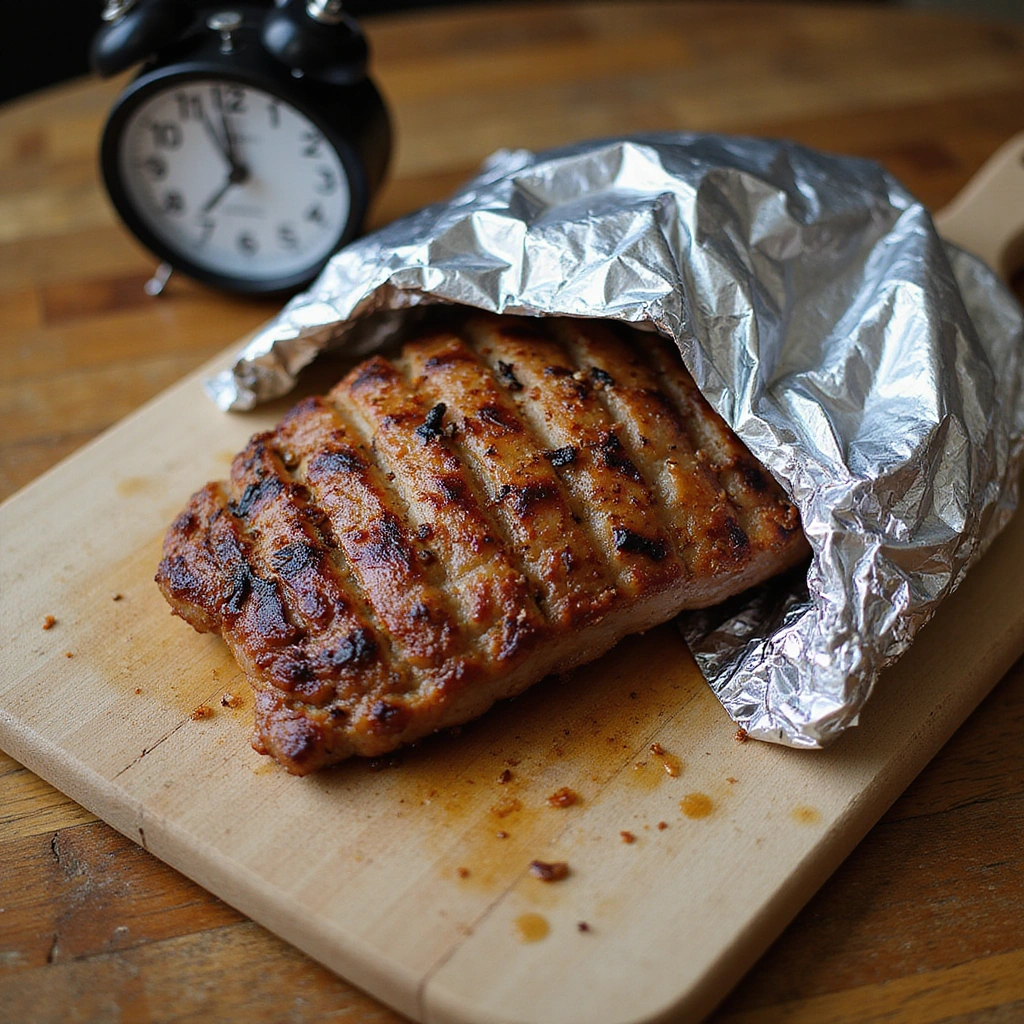
Once the meat is cooked to perfection, remove it from the grill and let it rest for at least 5 minutes.
Resting allows the juices to redistribute, making the meat more tender and flavorful.
Cover the meat loosely with aluminum foil to keep it warm while resting.
This is an important step that shouldn’t be skipped.
Step 9: Serve and Enjoy
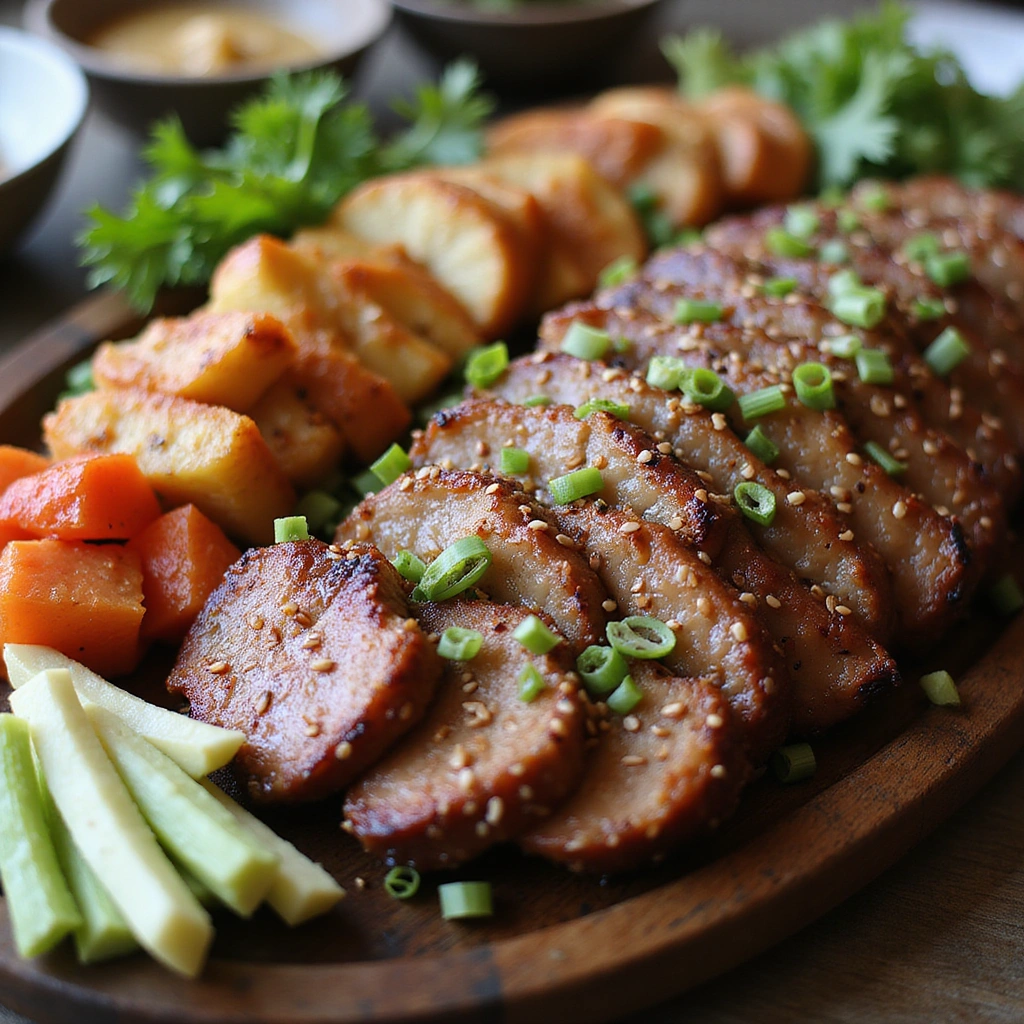
Slice the rested meat against the grain into bite-sized pieces.
Arrange the sliced meat and grilled vegetables on a platter for serving.
Garnish with sesame seeds and sliced green onions for added flavor and visual appeal.
Serve with steamed rice or lettuce wraps for a complete meal.
Critical Timing and Temperature Guide
Marinating Time: Marinate the meat for at least 30 minutes but preferably overnight. This allows the flavors to penetrate deeply.
Grilling Time: Grill meats for 5-7 minutes per side, depending on thickness. Use a meat thermometer to ensure the correct internal temperature.
Resting Time: Allow meats to rest for 5-10 minutes after grilling. This is crucial for retaining juices.
Pro Tips for Recipes With Korean BBQ Sauce Full Of Bold Taste
• Ingredient Selection: Choose high-quality meats like grass-fed beef or organic pork for the best flavor.
• Preparation Secret: Letting the marinated meat sit at room temperature for 10 minutes before grilling ensures even cooking.
• Temperature Management: Always preheat your grill to medium-high for the best sear and flavor.
• Texture Enhancement: Use a sharp knife to slice meat against the grain for maximum tenderness.
• Flavor Layering: Layer flavors by basting meat with marinade during the last few minutes of grilling.
• Make-Ahead Strategies: Marinate the meat a day ahead and store it in the fridge, covered tightly.
• Restaurant-Quality Finishing Touches: Garnish with sesame seeds and finely chopped green onions for a professional look.
• Equipment Optimization: Use a grill pan indoors when outdoor grilling isn’t an option.
Troubleshooting Common Issues
• Meat Overcooked: Overcooking can dry out the meat. To prevent this, always use a meat thermometer and remove the meat once it reaches the desired temperature.
• Flavor Too Salty: If your dish comes out too salty, balance it with a touch of honey or sugar to mellow the flavors.
• Sauce Not Thickening: If your sauce is too thin, simmer it over low heat until it reduces and thickens. You can also add cornstarch mixed with water to help thicken.
• Grill Marks Not Achieved: Make sure your grill is properly preheated and that you’re not moving the meat too often; let it sear before flipping.
• Vegetables Overcooked: To avoid mushy vegetables, grill them separately and remove them as soon as they are tender but still firm.
Variations and Regional Differences
• Jangjorim: A Korean dish featuring braised beef in a soy sauce marinade, often served as a side dish, differing from BBQ by being more tender and flavorful.
• Bulgogi: This popular Korean dish uses thinly sliced marinated beef that’s pan-fried, differing from BBQ by its cooking method and being sweeter.
• Galbi: Korean short ribs marinated and grilled, offering a rich flavor profile, different from standard BBQ due to its cut and marinade.
• Modern Interpretations: Incorporating plant-based proteins such as tofu or tempeh in the marinade for a vegetarian-friendly option that retains the bold flavors.
Food Science Behind the Recipe
• Marinade Chemistry: The acid in the marinade helps break down proteins in the meat, making it more tender while infusing flavors.
• Maillard Reaction: This chemical reaction occurs when grilling, creating complex flavors and a desirable brown crust on the meat.
• Flavor Balancing: The balance of sweet, salty, and spicy ingredients in the marinade works together to enhance the overall taste experience.
Frequently Asked Questions
What’s the most common mistake people make when preparing Korean BBQ? The most common mistake is overcooking the meat, which can be prevented by using a meat thermometer to check for doneness.
Can I prepare components of this dish in advance? Yes, you can marinate the meats a day ahead and store them in the fridge, covered tightly.
How do I adapt this recipe for dietary restrictions? For a gluten-free version, use tamari instead of soy sauce and check all other ingredients for gluten content.
What’s the best way to store and reheat leftovers? Store leftovers in an airtight container in the fridge for up to three days. Reheat in a skillet over low heat to maintain moisture.
Can I freeze this dish? Yes, the marinated meat can be frozen before cooking. Thaw in the refrigerator overnight before grilling.
What wine or beverages pair best with this dish? A light red wine like Pinot Noir complements the bold flavors of Korean BBQ well.
How can I scale this recipe up for a crowd? Simply multiply the ingredients by the number of servings needed, ensuring to allow enough grilling space and time for each batch.
What side dishes complement this recipe best? Side dishes like kimchi, pickled vegetables, and steamed rice enhance the meal’s flavor profile.
How do professional chefs elevate this dish for restaurant service? Chefs often use high-quality ingredients and unique garnishes to create visually stunning presentations.
Serving and Presentation Guide
• Traditional Presentation: Serve the meat on a wooden platter with grilled vegetables arranged around it, garnished with sesame seeds and green onions.
• Modern Plating Ideas: Use a sleek white plate with a smear of sauce underneath the meat, arranged artistically with vegetables on top.
• Accompaniment Suggestions: Serve with kimchi, rice, and a side of refreshing cucumber salad to balance the flavors.
• Special Occasion Presentation: For formal gatherings, consider individual servings with a decorative garnish of microgreens or edible flowers.
Conclusion
I hope this exploration of Korean BBQ sauce and its bold flavors inspires you to create your own delicious versions at home.
With simple ingredients and straightforward steps, you can bring a taste of Korea to your table.
I encourage you to experiment with different meats and vegetables to find your perfect combination.

